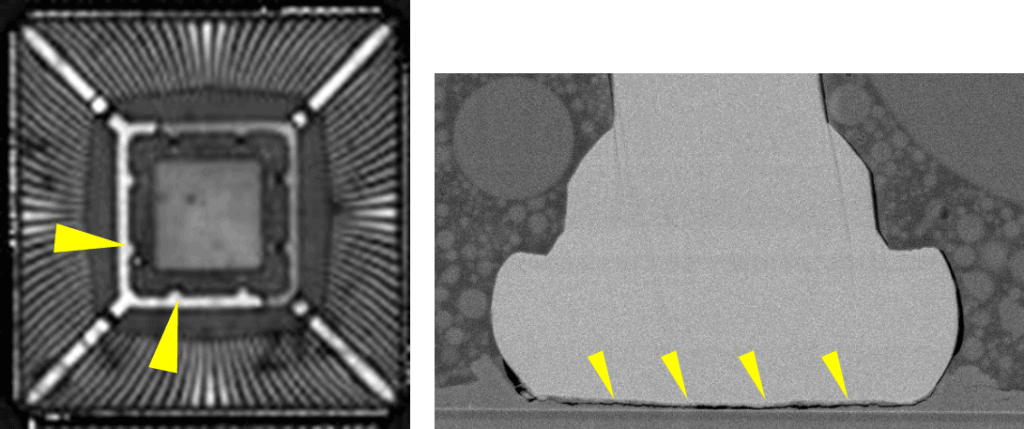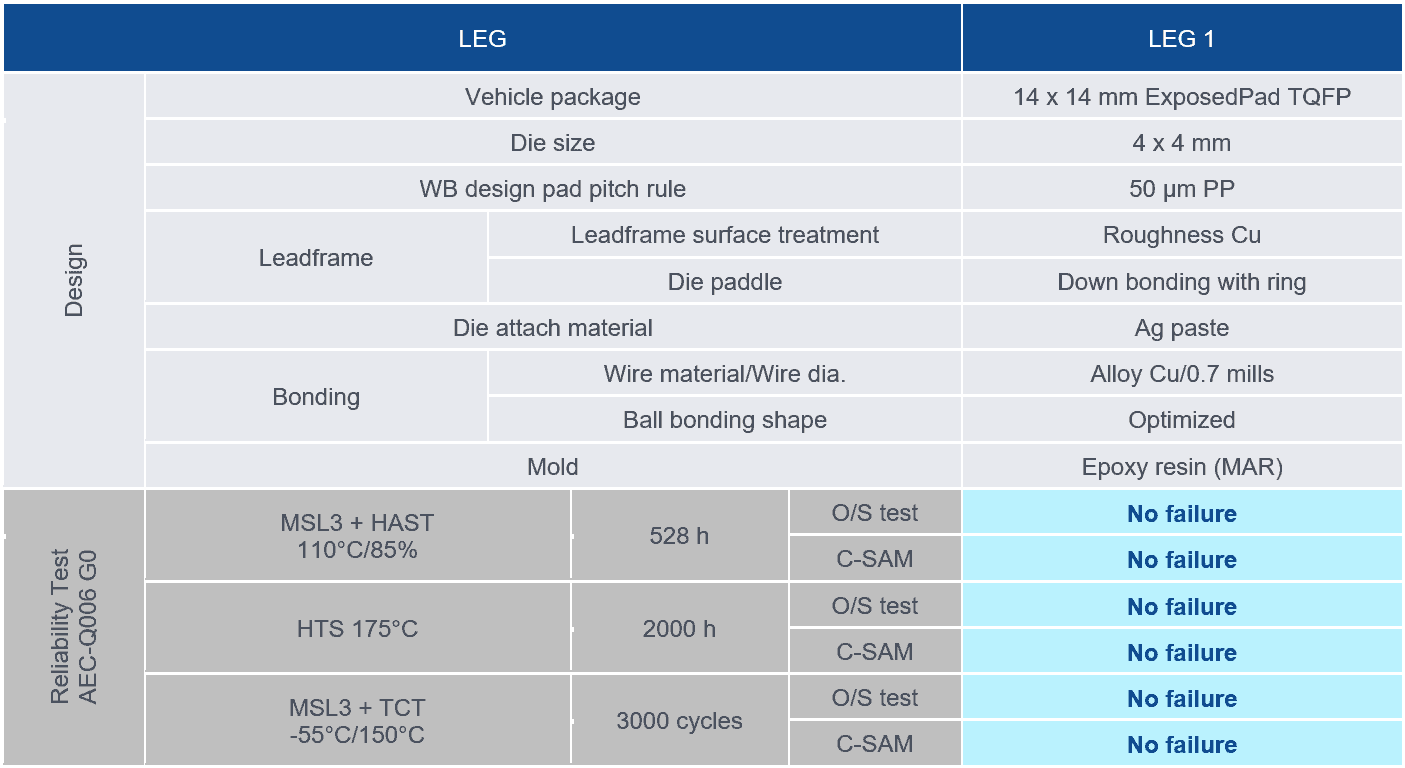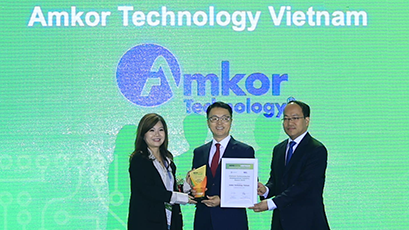Qualifying ExposedPad TQFP For AEC-Q006 Grade 0
Semiconductor packages used in various vehicle applications require high reliability. As technological innovations in the automotive market increase, the demand for highly reliable packaging is increasing for applications in autonomous driving, human interfaces, electric vehicles (EVs), hybrid electric vehicles (HEVs) and more. Package reliability is essential because automotive packages must pass extensive safety testing.
Challenges For AEC-Q006 Grade 0 Testing of ExposedPad TQFP
Semiconductor packages consist of several materials, each having different properties, such as a different coefficient of thermal expansion (CTE). The exact location of the resulting stress depends on the structure of the semiconductor package. Due to these various characteristics, passing extreme tests, such as those from the Automotive Electronics Council (AEC) and specifically achieving AEC-Q006 Grade 0 (G0), is a difficult task for semiconductor manufacturers. The non-exposed Thin Quad Flat Pack (TQFP) has already achieved AEC-Q006 G0, but the ExposedPad TQFP required many optimizations due to higher internal stresses depend on package structure.
The ExposedPad TQFP features an exposed die pad/heatsink on the back of the package (see figure 1 and figure 2). Compared to the non-exposed TQFP, it has excellent thermal characteristics, which makes it suitable for products with high power consumption. It is used in microprocessors, application-specific integrated circuits (ASICs), system on chip (SoC) products, and more.
 Fig. 1: Package outline of a 14 x 14 mm ExposedPad TQFP.
Fig. 1: Package outline of a 14 x 14 mm ExposedPad TQFP.

Fig. 2: Cross section of the ExposedPad TQFP.
The standard materials of the ExposedPad TQFP are spot silver (Ag) plated copper (Cu) leadframe (LF), silver (Ag) paste die attach, copper (Cu) wire interconnect and an epoxy mold compound (EMC) for encapsulation. The die material is typically silicon (Si).
The different types of materials require strong adhesion and connectivity to each other to withstand severe environment reliability testing and pass the safety standards for an automotive component.
Typically, products that fail after reliability tests experience delamination between the EMC and various materials and the bonding connection of the bond pad side of the wire bond (see figure 3).

Figure 3. Example of failure modes: (L) Delamination LF and EMC; (R) Open fail at ball bond.
The Main Criteria of The Automotive Electronics Council
AEC standards are failure mechanism-based stress test qualifications for packaged integrated circuits. AEC-Q100 provides the qualification criteria for automotive semiconductor packages. In addition, AEC-Q006 is an additional standard for semiconductor packages using copper wire. To satisfy AEC-Q006 G0 requirements, three major internal qualification tests were performed (see figure 4).

Fig. 4: Three major criteria of AEC-Q006 G0 include Moisture Sensitivity Level 3 (MSL3), Highly Accelerated Stress Test (HAST), high-temperature storage (HTS) and temperature cycle testing (TCT).
The Importance of Achieving High Reliability
Passing the very extreme stress testing of AEC-Q006 requires specific attention to sensitive packaging areas, including:
- Material selection of the right Cu wire and EMC
- Leadframe surface treatment to improve adhesion with EMC
- Optimal design of Ag plating area that hinders the adhesion
- Optimized ball bonding shape
From previous experience/knowledge and new design of experiments (DOE) results, the optimum design and bill of material (BOM) was determined. This allowed the extremely versatile 14 x 14 mm ExposedPad TQFP to achieve AEC-Q006 G0 qualification (see figure 5).

Fig. 5: Reliability test results for AEC-Q006 G0 qualification of ExposedPad TQFP.
Conclusion
With the optimized package design and BOM, Amkor was able to pass the extreme testing of AEC-Q006 G0 with the 14 x 14 mm ExposedPad TQFP. These test results provide confidence that this extremely versatile package will meet the high demands of automotive manufacturers. The next development goal is to qualify larger body size ExposedPad TQFPs.
About the Author
Yoshio Matsuda is senior manager for wirebond and power package development at Amkor Technology. He joined Amkor in 2018 and is currently responsible for automotive package development. Before joining the R&D team, he spent two years at Amkor Technology Japan managing package design. He has more than twenty-five years of experience in package design and development for leadframe/laminate packages.


